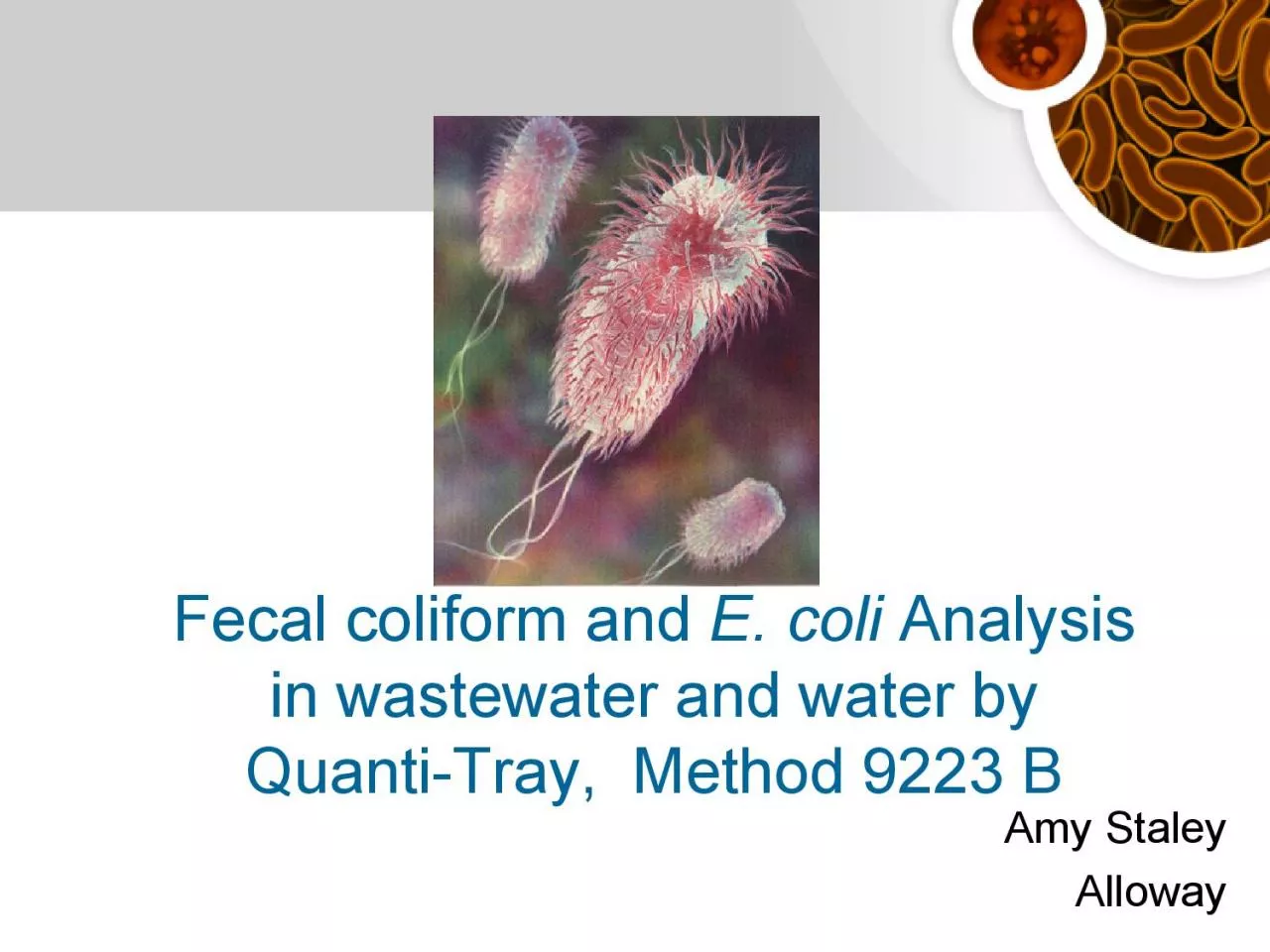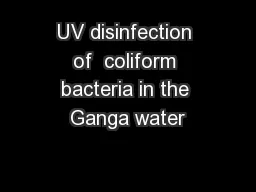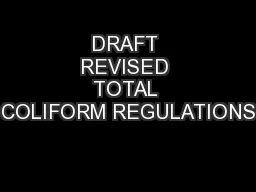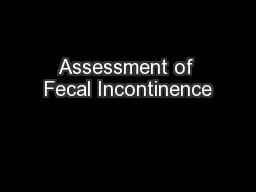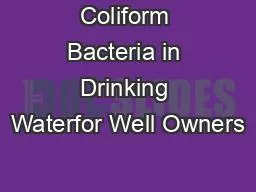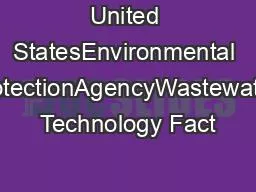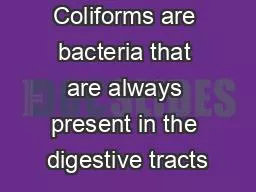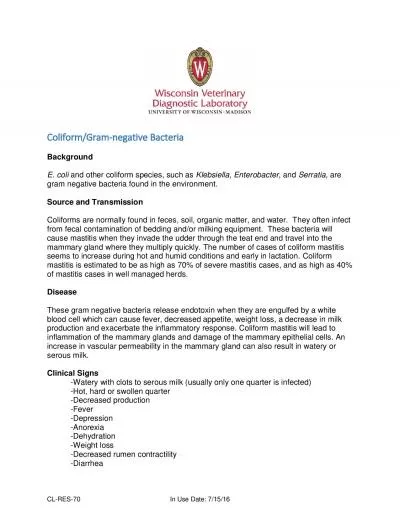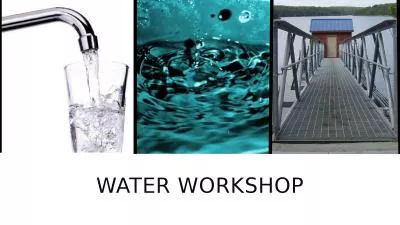PDF-Fecal coliform and E coli Analysis in wastewater and water by QuantiT
Author : evelyn | Published Date : 2022-08-24
E coli What is Total Coliform bacteriaTotal coliform bacteria characteristicsAerobic or facultative anaerobesGram negative bacilli rod shapedNonspore formingWhen
Presentation Embed Code
Download Presentation
Download Presentation The PPT/PDF document "Fecal coliform and E coli Analysis in wa..." is the property of its rightful owner. Permission is granted to download and print the materials on this website for personal, non-commercial use only, and to display it on your personal computer provided you do not modify the materials and that you retain all copyright notices contained in the materials. By downloading content from our website, you accept the terms of this agreement.
Fecal coliform and E coli Analysis in wastewater and water by QuantiT: Transcript
Download Rules Of Document
"Fecal coliform and E coli Analysis in wastewater and water by QuantiT"The content belongs to its owner. You may download and print it for personal use, without modification, and keep all copyright notices. By downloading, you agree to these terms.
Related Documents

